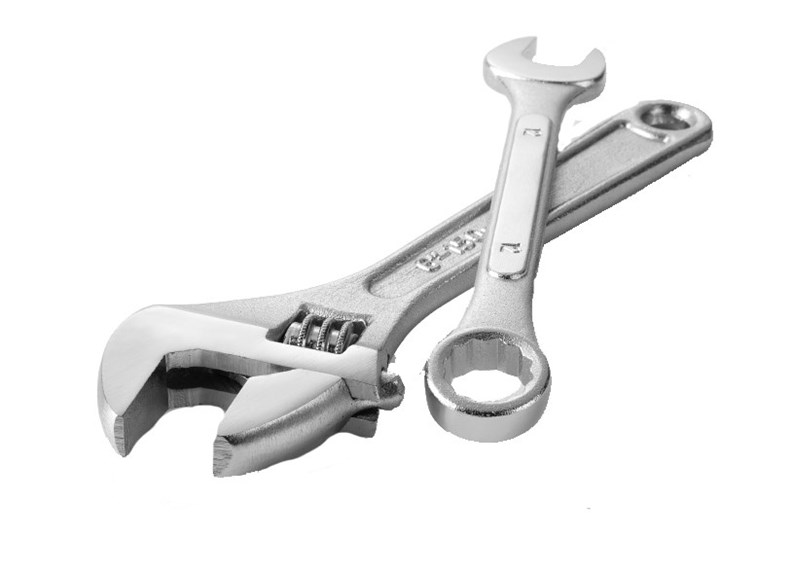When a building or an apartment owner embarks on a large project, they often turn to a construction manager to be on-site, keeping things to predetermined schedules, approving payments, making sure what's promised is delivered, and running interference between the board and builders. Of course, not everybody uses a "CM," but doing so can help a project progress more smoothly and eliminates a lot of pressure on board presidents, committee members, and managing agents.
Most CMs operate independent of the contractor. They're professionals who come in to oversee construction or renovation projects in whole buildings, or in individual apartments. Most board members and shareholders/owners have regular jobs during the day, and managing agents have a host of responsibilities, making it impossible for them to be on-site, directing workflow and making sure things are done to the board's or owner's specifications. Even if they have the time, most owners, directors, and managers lack the construction expertise to oversee a major project.
CMs can come from a number of different professional perspectives. "Sometimes they are the same type of company, wearing a different hat, but they should always be independent," notes C. Jaye Berger, a Manhattan-based attorney, who specializes in contractor and landlord-related issues. Selecting the right one boils down to experience. "They should be able to give you jobs that they've worked on," Berger says. "You should be able to call and check those references. The other thing is pricing - that's always a factor."
Berger points out that although CMs might have architectural degrees, the end result is usually better if your chosen pro has worked on projects similar to what the board has planned. "You should figure out what the real motivation is to have someone as a CM, and whether that's what really makes sense, because the word is used rather loosely to refer to lots of different situations," she cautions.
According to Patricia Garbutt, owner of Patricia A. Garbutt PE, a New York-based construction consultant, some CMs actually have specific degrees in construction management. However, she adds, it is better to have worked in construction, either as an engineer or an architect. Board members, she says, should interview several CMs about their experience and how much time they will have for the project.
"The education is very much in the field," confirms George Garver, co-owner of Dreamworks Concepts LLC, a Fort Lee, New Jersey-based project management company. "Some have some college education or technical training out of high school," he says, "and others have bachelor's and master's degrees. Others are engineers or have worked in the trades."
CMs act as liaison between the management company that runs the building and the architects and interior designers overseeing the project, and therefore report to different parties. According to Berger, "it really depends on how the building wants to set it up. For most, it would be unwieldy to have the CM reporting to a bunch of people. Depending on the building, the CM might just report to the managing agent and the architect. They might periodically report to the board as a whole." Berger describes the CM as the bandleader, orchestrating the project and cutting costs. "It's their role to coordinate everybody."
The CM plays many roles, according to Stephen Carter, a combination architect, designer and construction/project manager, who is a principal, general partner and founder of Manhattan-based The Carman Group LLC. "What I do is integrate architecture and construction management together," says Carter, who has overseen both commercial and residential projects in New York City and throughout the country. One of his major roles in the commercial arena was representing the architect involved in the building of the Arthur Ashe Stadium at the USTA tennis center at Flushing Meadows. An architect for 25 years, Carter has been doing residential construction management for the past eight years.
His role, he says, is to make sure the project, which covers everything from research to design, bidding and procurement to completion, gets built according to specifications, is cost-effective, and conforms to the overall design and the assigned budget. These are many decisions that impact both the cost and the construction and all of that has to be considered very early in the design phase of the project, Carter explains.
Carter even provides a real estate appraisal component with his services. "I also do a study on how the value of the improved property will increase in value and that impacts the type of design that gets done," says Carter, who is a candidate for the professional designation of Certified Commercial Investment Manager (CCIM). This real estate brokerage designation allows for property to be evaluated according to the highest and best use, he says.
This, he believes, is a fairly new approach in construction management. "If you could do a real good real estate analysis, you may find that you want your floor level retail [stores] to be on the opposite side of where you have them because of the walk-by traffic that will probably happen. Just pure design-wise, you may want them oriented in the sunshine on the other side of the building," Carter says.
"This is just another piece of the pie. You have the possibility in many different flavors of what could be a very good and effective design, but there might be a scheme that is picked over one or the other that might impact the potential real estate value or might be a little more cost-effective.
"You might like one contractor over another and they may have the ability to handle particular types of materials better than another contractor. So it starts to suit the design. This is all part of it. All these pieces have to work together so the project looks good and will stay looking good for many years. You wouldn't hire a contractor that might be economical but doesn't really know very much about setting tile for your foyer."
The necessity of a CM is at the board's discretion. "What's a positive might also be a negative," Berger says. "It's another layer of involvement. Some people might view that as a good thing and some people might view that as surplus."
However, says Marisa Jacobs, co-owner of Dreamworks, many co-op owners are unfamiliar with the concept of CMs. "They don't have the time to oversee the job," she says, "and those that do might be unfamiliar with what they're looking at."
Dealing with a co-op or condo board rather than a commercial venture or an individual homeowner adds its own set of concerns to a project, says Carter. "The residential practice to me is more important because you do have the boards for approval and the dollars to an individual have a different consequence of being spent or not spent than they would to a large commercial group or to a corporation. A $35,000 change order to an individual is quite different than if it's being levied against a corporation," adds Carter.
"My function is to protect your money - and it's done by making sure the scope of work is very clear to the contractor, that the requisitioning process is done in a conventional manner and that the value of the work installed is always looked at very carefully so that the owner is protected," says Carter, who also acts as a consultant who can be called in to rescue projects that might be in trouble or in need of some sound direction.
A gap often occurs between what the contractor, who maintains a business relationship with the trades involved in the job, says he will do and what is delivered, Jacobs points out. "He's not going to be as tough on them as someone that had no allegiance to them," she claims. "It's our goal to make sure the homeowner is getting what he paid for. It's very much about quality control and policing."
"There are plenty of contractors that"¦realize I can work with them once they get used to [having a CM on the job]," Garver says. "Many times contractors have multiple jobs going on"¦sometimes they're just as well pleased to say, "˜Hey, you know what you're doing' and get on with it." If an owner uses a CM, he says, "There are no substandard procedures, no surprises. The job is the way [the owner] wanted it done."
And, Garver continues, "One of the biggest issues with contractors is they take on all these jobs and they'll deal with [an owners' questions or problems] later. My job cannot be, "˜I'll deal with it later,' because then no one's going to use me anymore." He says the number of projects a CM can juggle depends on the level of work required. "If it's custom"¦this may be something to handle a couple of jobs at a clip. If it's multiple small jobs, there may be five or six at any given time."
"I think there are only advantages to hiring a construction manager," Garbutt adds. "All boards are concerned with two things: time and money. They want the project done on time, and preferably within - or under - budget. If you work with a construction manager... they can work with the board before the project goes out for bid, help hire a professional to put contract documents together, negotiate change orders, and put a schedule together at the beginning of the project [for work and payment]."
Capital improvements in excess of $50,000 and above typically require a CM. According to Jason Fox, president of Astral Construction, a construction manager/consultant company based in Bergenfield, New Jersey, they work on a sliding scale percentage. He says a small project would cost between 10 and 12 percent of the gross revenues but that the rate can go as low as three percent for a multimillion-dollar project.
"A CM works for the board," Fox says. "My job is to maintain quality control. If there's any oversight in the overall administration of the project, I function as clerk of the works. We attend job meetings, and if change orders are necessary, we create value engineering." For example, he elaborates, if a contractor claims a change order is $20,000, and the CM knows it's only worth $10,000, they can negotiate a reasonable fee without impeding the job."
Fox says his firm often reviews an architect's design and then shows the board how to cut costs. "I'm there to ensure that what was specified is what you're going to get," he says.
The CM's objectivity and independence lets them point out design errors that might otherwise slip through the cracks. "If we found out that there was a deficiency in the architectural design, we're objective enough and independent enough to state that," Fox claims. "[It might just be] a legitimate mistake, a lot of times an architect or an engineer just can't foresee everything."
Liability issues are another factor to consider. Board members, Fox says, cannot always be on-site, but a CM removes them from the daily operations. "We coordinate the trades with the property manager and/or any personnel that are necessary."
The CM's responsibilities include being an owner's representative. "It's a good idea for owners to hire an owner's representative for any project, because the...fee will most often be paid for in the money that they save the owner," Garbutt says. She also recommends preparing good contract documents before hiring a contractor. "If you have a construction manager before you start construction, the construction manager can review those contract documents. If a board just goes out and hires a contractor with no written documentation, it's very hard for anybody to get that contractor to do anything, because there's no paperwork that lays out the requirements," she cautions.
A CM must also make sure that alteration agreements are properly adhered to, says Carter. A typical alteration agreement will "establish the hours of construction, they establish permits that are required by the co-op, they establish how to handle the project itself - just from general conditions like garbage or refuse, and it tells you what you cannot do in a building as design ideas."
Fox says CMs usually are interviewed before contractors begin bidding. When the board engages an architect or an engineer, the CM develops plans from which to create a value-engineering estimate for the project. After calculating a board-affordable budget, the CM and the architect discuss how to appropriately scale the project. From there, the CM, the property manager, or the architect selects contractors. Fox says his firm sends out a pre-evaluation questionnaire that covers experience, references, and the contractor's ability to provide completion bonds.
Next, the CM prepares bid packages, which have a two-and-a-half-week review period. Questions go through the CM and then on to the architect. Fox recommends a limit of three to five bids to minimize crowding during the site visit. After that the contractors have another two weeks in which to prepare their bid. "That gives contractors sufficient time to prepare a very good bid," Fox says. The CM reviews them with either the architect or the board, to which a recommendation can then be made. The contractor who lands the job attends an award conference with the board, at which the CM answers any further questions.
Once the contract has been awarded, the CM draws up a construction schedule that outlines certain milestones and provides a timetable for the entire project. "That way both the residents of the building and the board know where we are," Fox says. "Usually, the board meets once a month, and the CM would meet with the board and go over the status of the project."
During the course of the job, the CM meets with construction officials to ensure that everything goes according to plan. Toward the end, the CM and architect devise a so-called "punch list," which is an itinerary of minor corrections. The CM works with the various trade workers upon project closeout, which entails final inspections. "Eventually, you want to get a Certificate of Occupancy from the Buildings Department that everything is fine," Fox adds.
He also stresses the importance of filing all necessary documents. "That's a lot of work to do for a board member. You can do one of two things: You can work with a CM, who acts as the board's agent and has independence from the architect and the other contractors. Or have the architect do all of this."
Although CMs work with a managing agent, the board should remain informed as the project progresses, to avoid any unpleasant surprises, according to Garbutt. "I think board members should know exactly what is going on in their project." The CM also will consult with the contractor, with whom she recommends setting up weekly meetings. "Some projects need someone to be there every day, some need a phone call once a week, some need a meeting once a week," she says. "It all depends on the size of the contract and the quality of the contractor."
"There's been a need over the years"¦for getting the work done the way they want it," Garver adds. "Other times, because of the technical requirements on the job, a lot of change orders, they want you on the job full time to watch every nook and cranny."
Regardless of whether you're overhauling your own kitchen or redoing your building's entire entry hall and lobby area, it might be to your benefit to consider employing the services of an experienced construction manager. Your residents and your wallet may thank you when the dust settles.







Leave a Comment